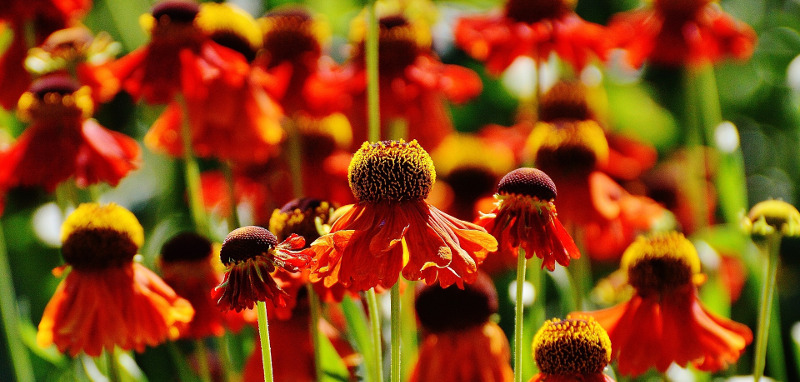Echinacea are some of the most robust bloomers in the perennial world, sending out bold sculptural blooms from June or July all the way to a strong frost. If your coneflowers are not performing this way, here are some tips to help bring the fireworks back to your garden.

Common Reasons Why Coneflowers Aren’t Blooming
Is your coneflower struggling to bloom? The first thing to consider is if it has the proper growing conditions. Echinacea need a minimum of four hours of direct sunlight, ideally in the afternoon, when the sun is strongest. The other key ingredient is proper soil drainage – coneflowers will melt away in heavy, wet soil. If you need to transplant, do so in spring, digging deep to save the taproot of species like E. pallida and others.
Did you divide your coneflower plant? They only need it every three or four years. When you transplant or divide your coneflower, the plant will focus on foliage production rather than flowers for a while.
Coneflowers don’t need a lot of fertilizer, so it’s easy to overdo. The best option is organic compost applied once in spring or fall, or a balanced fertilizer with nutrient ratio numbers like 10-10-10. Using a fertilizer with a higher nitrogen content – that first number – can boost leaves over flowers.
Another reason your coneflower may be slow to bloom could be it needs to be deadheaded. Deadheading is the removal of spent flowers, and the more you do it, the more you’ll be telling the plant to make more flowers.
Does Pruning Coneflowers Help Them Bloom?
Coneflowers respond really well to deadheading, or pruning off old flowers. They are “cut-and-come-again” flowers, like zinnias, and will reward your effort with scads of blooms. At some point, near the end of summer, cold temperatures will cue dormancy. This is a good time to follow suit and slow your deadheading.
It can be helpful to retain some old blossoms and stalks to leave seeds for the birds in winter, and to give the plant some woody structure to help it through the wet weather ahead, which can rot coneflowers without good drainage.
Does Fertilizing Coneflowers Help Them Bloom?
Fertilizing with a balanced fertilizer dealt with a light touch will help Echinacea grow as well as send up more flowers for you to enjoy. Balanced means the ratio of nutrients has similar levels, such as 5-5-5. Make sure to follow the directions, never going over the recommended amount. A foolproof method is an annual application of compost in fall or spring.
How Do I Get Coneflowers to Produce More Blooms?
Check you have the right conditions to keep your Echinacea happy (sun and good drainage), offer light fertilizing, and deadhead through early fall.
Why Aren't My Coneflowers Blooming?
- Make sure your coneflower has four hours of sun and well-drained soil
- Fertilize with either compost or balanced fertilizer annually in spring
- Deadhead blooms throughout summer, leaving some stalks and seed heads to overwinter.
 |
Author Erica Browne Grivas - Published 12-14-2021 |
